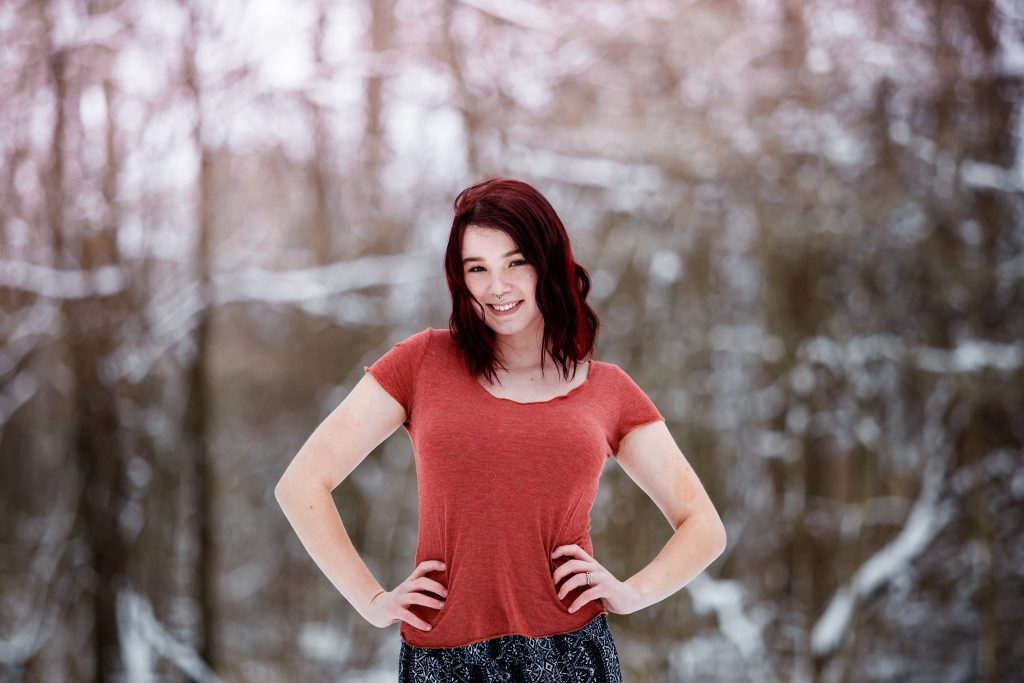So..What the Heck is Exposure and How Do You Master It?
- Published
- in Uncategorized

The term “exposure triangle” always comes to mind when talking about exposure in photography, and mastering the exposure triangle really give you an edge on taking great photos that are, well, perfectly exposed. But, like, what the heck does that even mean? Basically, it means that your image is well lit, with little to no noise or grain, and very little motion blur/shake. So, let’s just go over what ISO, Shutter Speed, and Aperture are and how each one of these settings affect an image.
ISO (sensitivity) – Affects the reactivity of the camera’s sensor. You would use low ISO settings in situations with plenty enough light – think a sunny day – where your camera’s sensor doesn’t need to be as sensitive to light because it has an over abundance of it. High ISO settings are for low light situations – this could be inside your home or at a school play. The sensor now is no longer able to get light from an outside source so you need to compensate by using a higher ISO setting.
Shutter Speed (duration) – There is a door on your sensor – it is the shutter. This setting determines the length of time that the door in front of the sensor is open. As long as that door is open, the sensor will continue to “record” light – and the image (because the image is just light bouncing off of things and back onto the sensor). If your shutter is open for a long period of time (meaning a slow shutter speed), the brighter your picture will be. Faster shutter speeds do not give the light very much time to get in, resulting in a darker image.
Aperture (amount of light) – A lot of people also refer to this as “fstop” – so keep that in mind when looking at other blog posts or talking to other photographers. This setting dictates the size of the opening in the lens. A wider aperture is a bigger opening, and will allow more light to come in at once – this means a small number. A smaller opening, of course, allows less light in – this means a larger number. (It is important to note that shooting wide also affects your depth of field – i.e. it gives you a really pretty blurry background, however, sometime’s it can cause you to shoot out of focus or not as sharp. But that is a lesson for another day – we are just discussing exposure here.)
All three of these work together harmoniously to create a perfectly (or not perfectly) exposed photo. If you choose to let the ISO take the brunt of the exposure, you can raise your shutter speed to capture movement and lower your aperture. You can play around between the three until you find your perfect balance.
I’m also going to suggest that you look at this post and video about exposure.
Hands on stuff:
As an administrator in a beginner’s photography group, we came up with an experiment to help teach exposure. I wanted to share that with you – it’s super interesting and I think it definitely helps manipulate manual settings in the exposure triangle.
Experiment A – ISO
1. Set ISO to 100. Make sure auto ISO is turned off.
2. Set your focal length to as wide as it will go (18mm for a kit lens).
3. Turn your camera to Manual Mode.
4. Set Shutter Speed to 1/60
5. Set Aperture to F4
6. Do NOT change aperture or shutter speed. Take a picture of the same motionless scene every time.
7. Take a picture at ISO 100.
8. Take a picture at ISO 200, 400, 800, 1600.
Experiment B – Shutter Speed
1. Set ISO to 800. Make sure auto ISO is turned off.
2. Set your focal length to as wide as it will go (18mm for a kit lens).
3. Turn your camera to Manual Mode.
4. Set Aperture to F4
5. Set Shutter Speed to 1/15
6. Do NOT change aperture or ISO. Take a picture of the same motionless scene every time.
7. Take a picture at SS 1/15.
8. Take a picture at SS 1/30, 1/60, 1/125, 1/250
Experiment C – Aperture
1. Set ISO to 800. Make sure auto ISO is turned off.
2. Set your focal length to as wide as it will go (18mm for a kit lens).
3. Turn your camera to Manual Mode.
4. Set Shutter Speed to 1/60
5. Set Aperture to F/4
6. Do NOT change ISO or shutter speed. Take a picture of the same motionless scene every time.
7. Take a picture at F4
8. Take a picture at F5.6, F8, F11, F16.
Once you’ve played around a bit, go to my Facebook Group, Katlin Shuherk Photo Community, and discuss your findings! Let me know if you still need some clarification and help. Once I mastered the exposure triangle, though, I felt like I had a good handle on my camera and started diving deep into my artistic side of photography. I will discuss more in my group my own process of choosing my manual settings and be available for my in depth questions! But I hope this post helps you all!